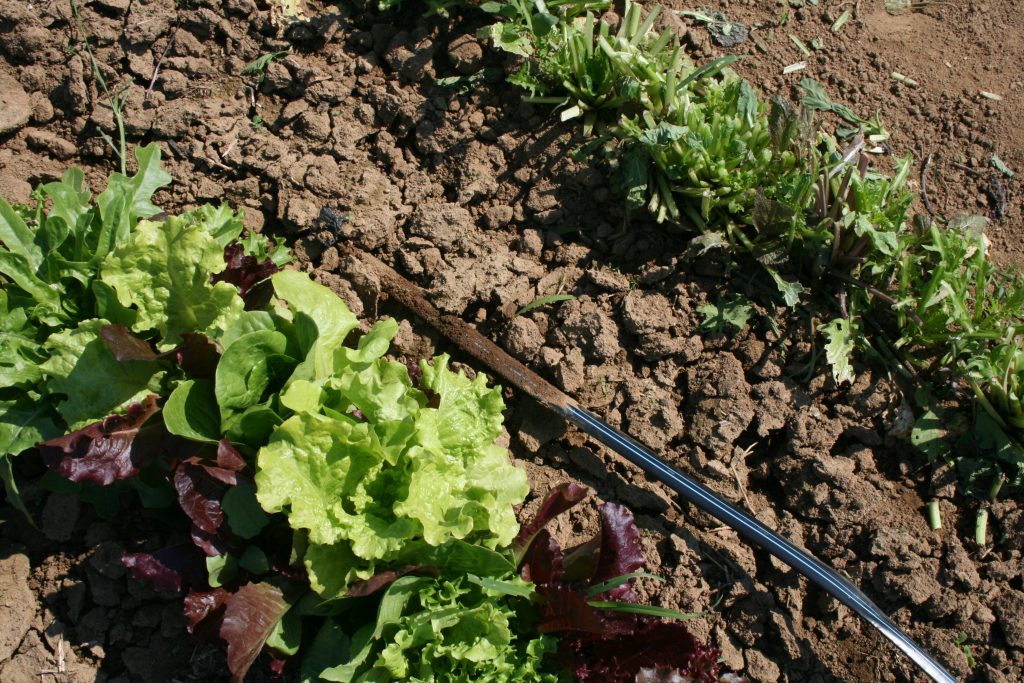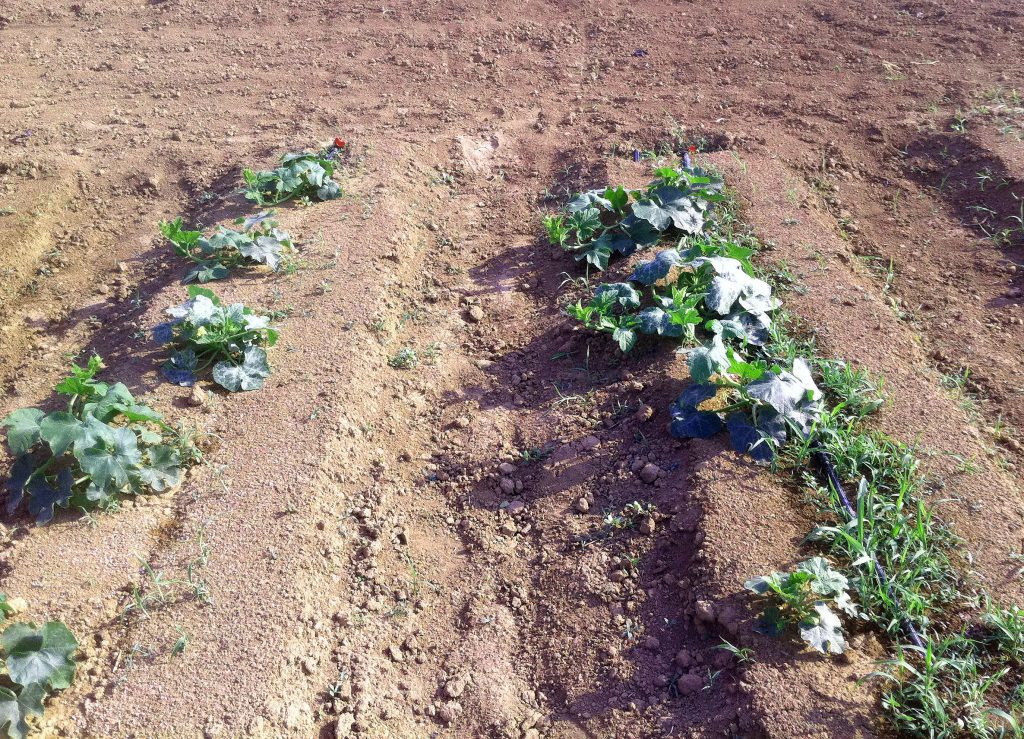
By Tim Coolong
Subsurface drip irrigation (SDI) has been around for many years in a variety of different iterations. Most typically, SDI refers to a permanent drip system installed fairly deep (18 inches) and is used for irrigating agronomic crops such as corn or cotton.
In many cases, vegetable crops are too shallowly rooted for a traditional SDI system, but some processing tomatoes are grown using SDI. However, a shallow SDI system, where drip tubing is buried at a depth of 4 to 6 inches (Figure 1), may be a tool that both conventional and organic vegetable growers can use.
ADVANTAGES
For organic growers, the ability to use shallow SDI offers two main advantages. The first is that crops can still be shallowly cultivated during the season without worrying about cutting drip tape. Second, having drip irrigation buried can allow for wetting of the root zone without excessive wetting of the soil surface. During dry seasons, this can reduce weed pressure (Figure 2).

Studies have also reported an increase in rooting depth and fertilizer use efficiency with shallow SDI. Many companies make drip tubing layers. University of Georgia (UGA) research has even used bed shapers/plastic layers to form beds and lay buried drip tube without using plastic mulch. In studies conducted with shallow SDI during a single season, no difference was seen in flow rate or clogging due to roots growing into the emitters. To keep costs low, 10-mil thick drip tubing was used since researchers only planned to use it for a single season. More permanent SDI systems use much thicker walled tubing.
LIMITATIONS
While shallow SDI can be a good tool for helping organic growers reduce weed pressure and improve cultivation, there are some potential limitations. UGA studies found that when comparing shallow SDI to surface drip, transplants with smaller (i.e., shallower) root balls initially grew quicker when planted into surface drip plots — particularly when weather conditions were dry and hot — promoting stress.
Many of the studies were conducted on loamy soils. It is likely that the lack of capillary movement of moisture on sandy soils may limit the use of shallow SDI in those situations. Further, the shallow SDI system did not wet the surface adequately to germinate seeded crops.
Lastly, although leaks were not common, rodents did chew into the buried drip tubing on occasion. Nonetheless, based on experience working with shallow SDI, it is a useful tool for organic vegetable farms.
More details on the role of shallow SDI on weed management can be found online (see www.intechopen.com/books/weed-and-pest-control-conventional-and-new-challenges/using-irrigation-to-manage-weeds-a-focus-on-drip-irrigation) in “Using irrigation to manage weeds: A focus on drip irrigation.”









